7.2 Directed Acyclic Graphs (DAGs)
Directed acyclic graphs (DAGs) are another approach that can be used to examine causal inferences from observational data.
- They were developed primarily by the computer scientist Judea Pearl
- DAGs provide a visual representation of causal assumptions.
- Some overlap with structural equation models (SEMs).
Importantly, DAGs can provide insights on
- What variables should be controlled for?
- What variables should not be controlled for?
- In what situations might control worsen causal inference?
7.2.1 Introduction to DAGs
Below is a simple DAG depicting a model in which the relationship between maltreatment externalizing is confounded by a common cause, income.
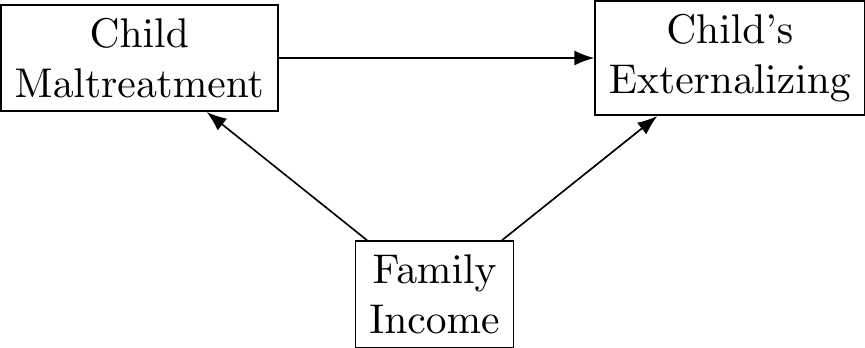
DAGs consist of nodes (variables) and arrows (edges) between these nodes, which reflect causal relationships.
It is assumed that manipulation of a variable at which an arrow begins (e.g., a manipulation of child maltreatment with income held constant) would change the variable at the end of the arrow (e.g., externalizing).
7.2.2 Introduction to DAGs: Paths
From these two simple building blocks—nodes and arrows—one can visualize more complex situations and trace paths from variable to variable:
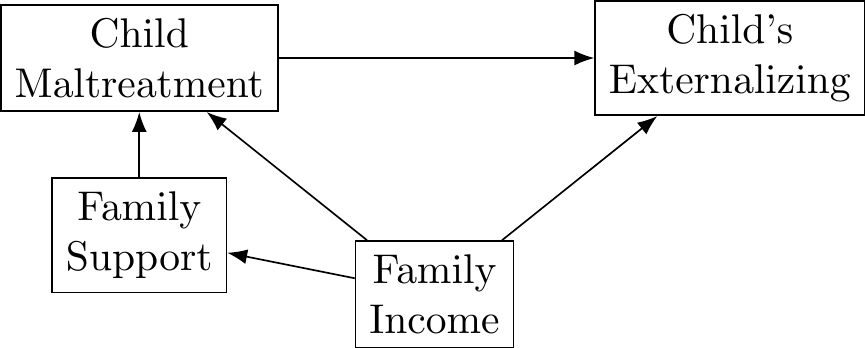
Paths
- A simple path leads just from one node to another (income → stress).
- Paths can also contain multiple nodes:
- income → stress → child maltreatment
- Paths can also travel against the direction indicated by arrows
- child maltreatment ← stress ← income → externalizing
7.2.3 Introduction to DAGs: Chains
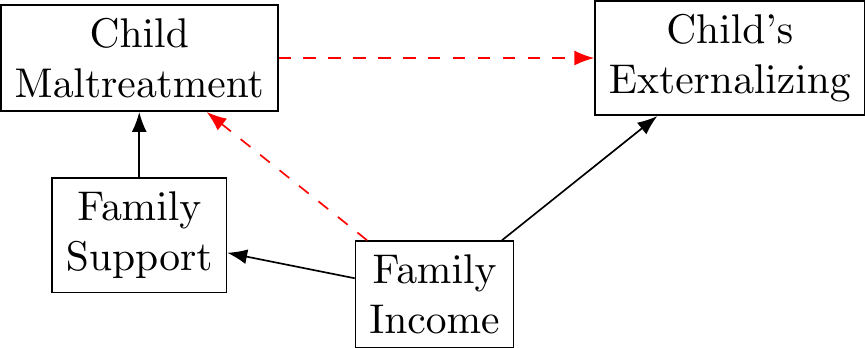
Chains
- Chains have the structure A → B → C.
- Chains can transmit an association between the beginning and end nodes.
- If income causally affects child maltreatment, and child maltreatment causally affects externalizing, then income and externalizing can be correlated.
7.2.4 Introduction to DAGs: Descendants and Ancestors
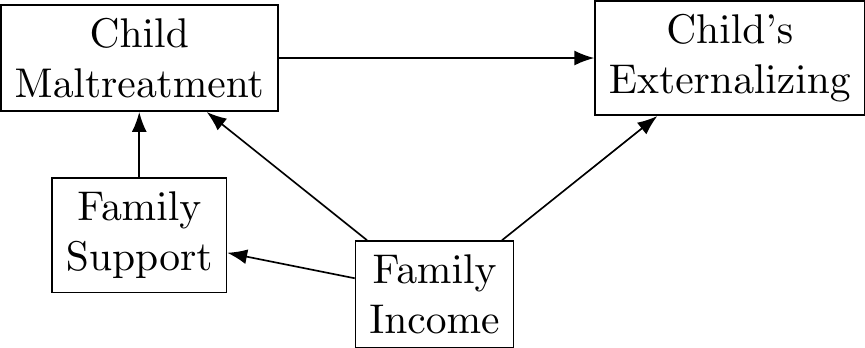
Chains: Descendants and Ancestors
- Along a chain, variables that are directly or indirectly causally affected by a certain variable are called its descendants
- externalizing is a descendant of child maltreatment
- Variables that directly or indirectly affect a certain variable are considered its ancestors.
- income is an ancestor of support, child maltreatment and internalizing
7.2.5 Introduction to DAGs: Forks
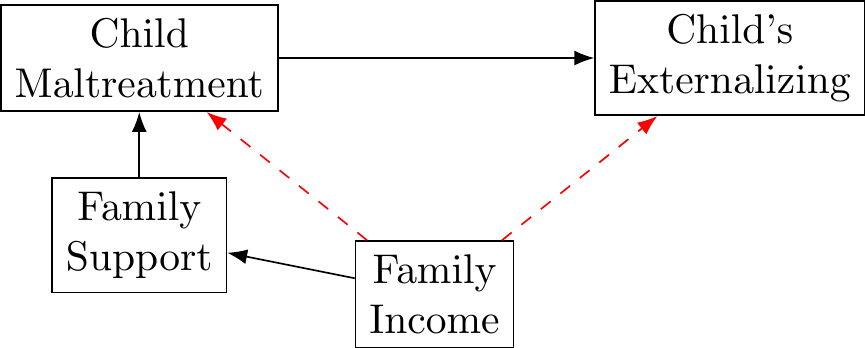
Forks
- Forks have the structure A ← B → C.
- A fork can transmit an association, but it is not causal.
- In isolation, this fork indicates that child maltreatment and externalizing may be correlated because they share a common cause, income.
- Forks are the causal structure most relevant for the phenomenon of confounding.
7.2.6 Introduction to DAGs: Inverted Forks
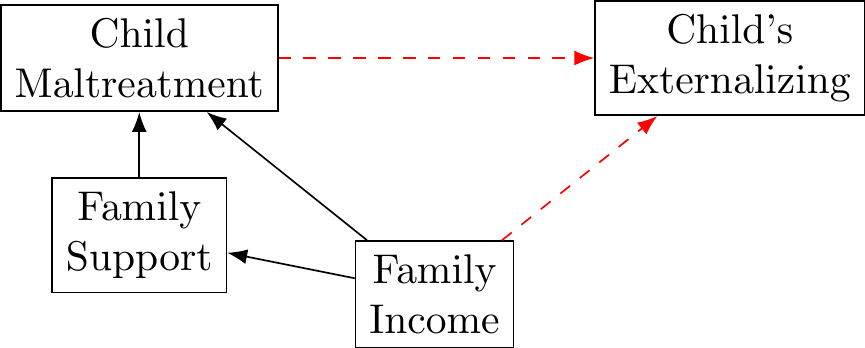
Inverted Forks
- Inverted forks have the structure A → B ← C.
- An inverted fork does not transmit an association.
- In isolation, If child maltreatment and income both affect externalizing, this does not imply that they are in any way correlated.
- Inverted forks are relevant to the problem of collider bias.
7.2.7 Introduction to DAGs: Acyclicity
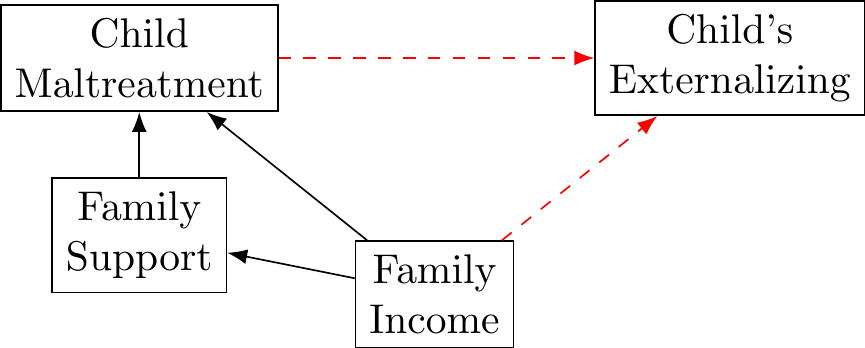
Acyclicity
- DAGs are acyclic because they do not allow for cyclic paths in which variables become their own ancestors.
- a variable cannot causally affect itself
- Developmental systems often contain feedback loops and reciprocal relationships.
- Often feedback loops can be modeled in a DAG by taking the temporal order into account and adding nodes for repeated measures.